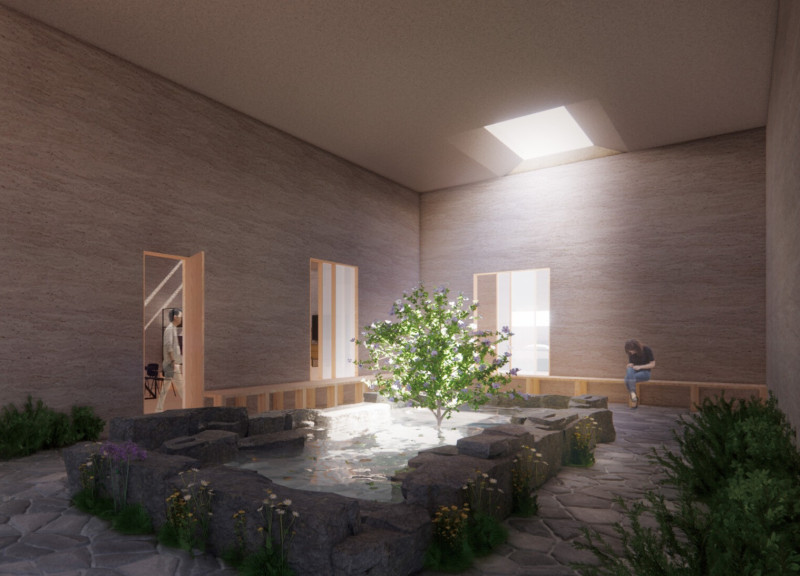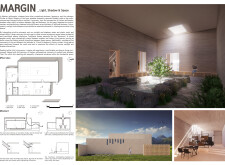5 key facts about this project
### Project Overview
Located in a residential area that emphasizes the connection between built environments and nature, the “Margin - Light, Shadow & Space” project explores the philosophical themes of light and shadow. This design merges functional living spaces with natural elements, aiming to create a harmonious atmosphere that transcends mere shelter. The project reflects an intention to foster a deeper understanding of the interplay between architecture and nature, encouraging a sense of interconnectedness for its inhabitants.
### Spatial Configuration and Light Management
The spatial layout is thoughtfully arranged to enhance connectivity and flow between different areas. Central to the design is an open courtyard featuring a pool, surrounded by living spaces including bedrooms, a kitchen, and a living room. This configuration allows for optimal views and interaction with the natural surroundings, while the courtyard serves as a source of light and ventilation, enriched by the presence of water and vegetation.
The manipulation of natural light is a critical aspect of the design. Skylights and strategically positioned windows create varying light conditions throughout the day, contributing to an engaging residential experience. Light shelves are incorporated to reflect light into deeper areas of the home, softening the contrast between interior and exterior spaces. This approach not only enhances the living experience but also accentuates the dialogue between light and shadow.
### Materiality and Natural Elements
Material choices play a significant role in establishing the ambiance of the residence. Concrete serves as the primary structural component, while natural stone is used in landscaping elements surrounding the water feature. Wood is utilized for interior applications, providing warmth, and glass elements optimize natural light access.
The integration of natural elements, such as water, vegetation, and rocky pathways, further enhances the outdoor experience. These features not only add aesthetic value but also contribute ecologically, supporting climate action and biodiversity. This careful consideration of materials and elements fosters a living environment that is both responsive to and reflective of its natural context.






















































